Academy Award winning cinematographer Dean Semler has achieved international recognition for his work on numerous critical and commercial hit films. Mr. Semler has been shooting feature films for over three decades, photographing some of the most iconic and recognizable faces on the planet. He recently lensed the horse racing drama ‘Secretariat’ in addition to Angelina Jolie’s directorial debut ‘An Untitled Love Story’.
Jason: When and how did you first get your break into the film industry?
Dean Semler: I was born in Renmark, a small country town in Australia on the fringe of the outback. I’d not even seen television when I applied for a position as a props boy at Rupert Murdoch’s newly opened television station in Adelaide, the state capital. I had no idea what the position entailed but I took a bus to the city and went to the interview.  For some reason I’ll never know I got the job and was thrown into this fantastic, exciting new world. Within a year I was operating a studio camera because there were very few people who’d had any experience at all and opportunities were plenty over the next couple of years. I always envied the two news camera men who at the end of each day would pass through the studio with light meters around their necks and film rolls tucked under their arms. As luck would have it I would soon join them as the third newscamerman, I was 19. There was no film school and my only film experience was making a few little 8mm home movies, I had a lot to learn, and two great mentors. Pat Mcewan, and Trevor Rose took me under their wings and guided me in those early years. Pat would shoot solid and steady, using a tripod, filters, no flares, wheras Trevor would shoot wild and woolly, handheld, no worries. I am embedded to them both for their mixed teachings. One of the first events I covered was THE BEATLES explosive visit to Adelaide, the crowds, the traffic jams, the press conference filmed on an Auricon sound camera, and of course their spectacular frenzied concert with the hysterical screaming fainting crowds. It would be ten or so wonderful years of moving up in the ranks from news to current affairs, documentaries, ethnographic films with anthropologists, small dramas, cinema shorts, commercials and features before my next big break into features came, and that would be George Miller’s “Road Warrior“
For some reason I’ll never know I got the job and was thrown into this fantastic, exciting new world. Within a year I was operating a studio camera because there were very few people who’d had any experience at all and opportunities were plenty over the next couple of years. I always envied the two news camera men who at the end of each day would pass through the studio with light meters around their necks and film rolls tucked under their arms. As luck would have it I would soon join them as the third newscamerman, I was 19. There was no film school and my only film experience was making a few little 8mm home movies, I had a lot to learn, and two great mentors. Pat Mcewan, and Trevor Rose took me under their wings and guided me in those early years. Pat would shoot solid and steady, using a tripod, filters, no flares, wheras Trevor would shoot wild and woolly, handheld, no worries. I am embedded to them both for their mixed teachings. One of the first events I covered was THE BEATLES explosive visit to Adelaide, the crowds, the traffic jams, the press conference filmed on an Auricon sound camera, and of course their spectacular frenzied concert with the hysterical screaming fainting crowds. It would be ten or so wonderful years of moving up in the ranks from news to current affairs, documentaries, ethnographic films with anthropologists, small dramas, cinema shorts, commercials and features before my next big break into features came, and that would be George Miller’s “Road Warrior“
J: How did your collaborating with George Miller on ‘The Road Warrior’ and ‘Beyond Thunderdome’ come about?
DS: I was shooting a movie and it was the day John Lennon was murdered. I was asked to meet with the Mad Max creators, George Miller and his partner Byron Kennedy in their city office. I met with them and we had what seemed a very congenial meeting. Shortly after I got a call and was offered the position of Director of Photography on ‘ Road Warrior’ a fabulous break for me and the beginning of a long standing relationship with George that still exists today. I shot ‘Road Warrior’ and ‘Beyond Thunderdome’ for George as well as ‘Dead Calm’ produced by KENNEDY/ MILLER, the movie that launched Nicole Kidman’s international career. I also worked with George developing the first draft of ‘Babe’ . ‘Mad Max 4’ is in the works and should be happening in early 2012.
J: Would that be shot in Australia like the previous films in the series?
DS: Definitely…the same classic desert landscapes…’The Blessed Outback’ vast horizons and spectacular skies.
J: ‘The Road Warrior’ features one of the most thrilling car chases ever put on film. Was it a monumental undertaking to get that sequence on the screen, especially at that point in your career?
DS: Certainely was I was taught a hell of a lot by George and Byron on that film. Every day I learned from them. George would tell me “just be bold” which was a great bit of advice. 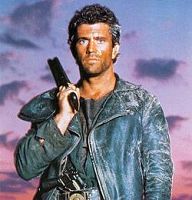 I had never photographed action before but George had gained a lot of experience from the first ‘Mad Max’, especially in the editing room from hours of looking at the dailies and studying camera position, angles that cut and angles that wouldn’t. So he was armed with a lot more knowledge than on the first one and he was very clear on how to shoot the action, sometimes it seemed very dangerous. I remember thinking “I’m sticking my neck out here” but George would say “you’re going to be fine, one vehicle is going this way and the other is traveling away from the camera”. He had a very careful plan and gave me stacks of confidence. Placement of cameras was a very precise exercise, and we didn’t have the remote heads or other toys that are available today, so safety for crew and cameras was foremost. I had a very small camera department; only had half a dozen people at most. I operated . For some shots I rode in the side car of a motorcycle with a hand-held camera aimed up the arse of the giant truck with stone, dirt and dust flying in my face, it was hellishly exciting. I mounted a camera 6 inches off the ground attached to a dune buggy and the stunt driver would squeeze the button while charging headlong into the crazy armada inches away from the wheels speeding over the bumpy desert floor. The movie was a 12 week shoot with no green screen or CGI effects. The sequence with Bruce Spence flying the gyro copter was accomplished by putting the copter on the back of a stationary flatbed truck. I had the camera on a Mini JIB arm with a marine head and a short curved track, which allowed any sort of simulated movement. Just add smoke and wind and your flying! It was only a one- seat copter, in the script Bruce has to pick up Mel for the rescue. That was done with a polystyrene dummy made to look like Mel but was light enough for the pilot to fly with. For one sequence I was strapped on the front of a truck with my camera assistant Richard Merryman,and the camera was hanging on a bungee cord attached to a pipe.
I had never photographed action before but George had gained a lot of experience from the first ‘Mad Max’, especially in the editing room from hours of looking at the dailies and studying camera position, angles that cut and angles that wouldn’t. So he was armed with a lot more knowledge than on the first one and he was very clear on how to shoot the action, sometimes it seemed very dangerous. I remember thinking “I’m sticking my neck out here” but George would say “you’re going to be fine, one vehicle is going this way and the other is traveling away from the camera”. He had a very careful plan and gave me stacks of confidence. Placement of cameras was a very precise exercise, and we didn’t have the remote heads or other toys that are available today, so safety for crew and cameras was foremost. I had a very small camera department; only had half a dozen people at most. I operated . For some shots I rode in the side car of a motorcycle with a hand-held camera aimed up the arse of the giant truck with stone, dirt and dust flying in my face, it was hellishly exciting. I mounted a camera 6 inches off the ground attached to a dune buggy and the stunt driver would squeeze the button while charging headlong into the crazy armada inches away from the wheels speeding over the bumpy desert floor. The movie was a 12 week shoot with no green screen or CGI effects. The sequence with Bruce Spence flying the gyro copter was accomplished by putting the copter on the back of a stationary flatbed truck. I had the camera on a Mini JIB arm with a marine head and a short curved track, which allowed any sort of simulated movement. Just add smoke and wind and your flying! It was only a one- seat copter, in the script Bruce has to pick up Mel for the rescue. That was done with a polystyrene dummy made to look like Mel but was light enough for the pilot to fly with. For one sequence I was strapped on the front of a truck with my camera assistant Richard Merryman,and the camera was hanging on a bungee cord attached to a pipe. 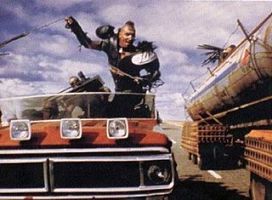 We were shooting through the windshield at Mel whom was actually driving the truck. When we started it was fine. But as we picked up speed on the rough road it became impossible to hold the camera to my eye which was already bleeding from hitting the eye piece so we just kept on going and I aimed the camera where I thought the action would be taking place. When we saw the footage in the dailies it was incredibly exciting and set a higher benchmark for future amped up action coverage.
We were shooting through the windshield at Mel whom was actually driving the truck. When we started it was fine. But as we picked up speed on the rough road it became impossible to hold the camera to my eye which was already bleeding from hitting the eye piece so we just kept on going and I aimed the camera where I thought the action would be taking place. When we saw the footage in the dailies it was incredibly exciting and set a higher benchmark for future amped up action coverage.
J: You’ve worked with and photographed some of the most recognizable faces on the planet. Is there ever an intimidation factor when working with a ‘Movie Star’?
DS: Absolutely not, I’m certainly lucky to be able to do it. You have to give these guys their space as a DP. You have to understand what they need, what they want, how they are feeling. It’s gotta be a tough job putting yourself in front of a camera and creating a performance that will be around forever, particularly if you already have a reputation as being a ‘movie star’. I try to make them feel good and relaxed and let them feel important. Some stay in character others don’t. Kevin Costner on ‘Dances with Wolves’ was very methodical in his approach to that character. It was a tough job for him to direct and be so into character and it was the same with Ed Harris on ‘Appaloosa’. Sometimes I didn’t know who I was talking to. Was it Ed the director or ‘Cole’ the character? It was a bit like that with Kevin. You have to give these guys credit to be able to take on the two jobs direct and stay in character. It wasn’t until I saw the ‘Dances With Wolves’ that I realized what an extraordinary job Kevin (Costner) did in his character development throughout that film because we shot it completely out of order. To pull that off, that kind of a performance, and direct and be responsible for the money and to be concerned with what Hollywood is saying about you. I give him full marks; it’s a damn admirable job.
J: You’ve worked in every genre over your career including comedies. Do you enjoy being on set with some of the greatest screen comedians of all time?
DS: Comedians are some of my favorite people to work with. It’s was such a pleasure working with 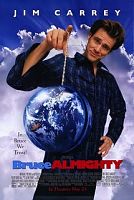 Eddie Murphy on ‘Nutty Professor’. He’s an absolute genius to be able to play five separate characters in one scene.To have the patience to sit in a make-up chair for 3-4 hours every morning then come on set for another 6-7hrs and then being someone totally different the next day. I loved watching Billy Crystal work on ‘City Slickers’ and I equally enjoyed working with Jim Carrey on ‘Bruce Almighty’. It’s a thrill to be six feet away from the guy when he’s playing ‘god’ and he’s totally in character and improvising. How lucky can you get? I’ve done a lot of work with Adam Sandler too, he’s more of an actor’s comedian, as opposed to guys like Eddie and Jim whom are straight up and down funny guys.
Eddie Murphy on ‘Nutty Professor’. He’s an absolute genius to be able to play five separate characters in one scene.To have the patience to sit in a make-up chair for 3-4 hours every morning then come on set for another 6-7hrs and then being someone totally different the next day. I loved watching Billy Crystal work on ‘City Slickers’ and I equally enjoyed working with Jim Carrey on ‘Bruce Almighty’. It’s a thrill to be six feet away from the guy when he’s playing ‘god’ and he’s totally in character and improvising. How lucky can you get? I’ve done a lot of work with Adam Sandler too, he’s more of an actor’s comedian, as opposed to guys like Eddie and Jim whom are straight up and down funny guys.
J: Do you prefer working in one particular genre over another?
DS: I think I’ve managed to shoot all genres, I guess I’m a whore and just enjoy working. I love action and westerns; I’ve always said “I’d rather have horseshit on my boots than chewing gum”. At one point I did five or six westerns in a row from ‘Lonesome Dove’ to ‘Dances’ and ‘City Slickers’ then on to the ‘Young Guns’ films. I’ve always been fond of the genre; I like big-scope pictures with vast landscapes and great skies. I also enjoy Thrillers. I’d love to do more of those and I’d also like to do a Musical. Maybe I can do a Thriller/Musical set in the desert. That’ll shut me up for awhile.[Laughs]
J: Is there a major difference between working with an Actor/Director as opposed to a straight up Director?
DS:Once again it’s about sharing your knowledge and experience. An actor who also is directing may look to depend on you a little more particularly if it’s their first time with both duties. I always feel that it’s their film; it’s never ‘my’ movie. So I’m just there to help put their vision on the screen. I have never gotten into a battle with a director over something I felt strongly about. I offer my suggestions but at a certain point we have to move on. I just worked with Angelina Jolie on her first film behind the camera. She wrote a love story set during the Bosnian War and we shot it in the fabulous city of Budapest, last year. She did a great job and we had a terrific experience. She worked extremely well with an all European cast, sharing her extensive knowledge as an actress with them. As did Mel on ‘Apocalypto’ and Kevin did on ‘Dances’, as actors they gave a lot to their fellow thespians.
J: You Won an OSCAR for your work on ‘Dances with Wolves’. At what point did you realize this had the potential to become something special?
DS: I think it was before we started shooting. We shot makeup, hair and wardrobe tests,in a little concrete vacant store in South Dakota we had no set of any sort just a plain wall backing It was the first time we’d 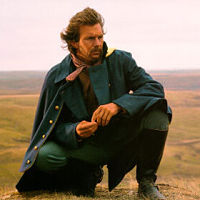 see the actors in their various stages of ‘looks’ including quite a few for Kevin who went through a radical change from beginning to end. I lit the actors fairly dramatically allowing an ‘e’ fan to give some movement to their hair and head dresses. These tests are always fairly technical, each department deciding with the director the final look for makeup hair and wardrobe. We screened the tests in a conference room at the hotel. Kevin used to play music during dailies the thousands of feet of film we shot with the buffaloes and the wolves had no sound, so Kevin would play music from classic Westerns as he said ‘to help hold the images on the screen’, anyway we all got together to look at the makeup tests. There were 15 or 20 of us, all heads of department and some family members. I remember Kevin playing the theme from ‘Lonesome Dove’ and also the Aussie film ‘The Man from Snowy River’. It was unbelievable what that music did to those images and vice versa. We were all caught dabbing our eyes when the lights came up at the end it was such a wonderfully moving experience, I guess we then knew that this was certainly something special. Kevin was incredibly generous to his crew and fellow actors. It was a long shoot from a hot summer into an icy cold winter. During production there was no talk of awards or Oscars at all, and about a year later I was shooting ‘City Slickers’ and I had a call from a producer I had worked with previously that told me there was buzz about ‘Dances’ being potentially up for Oscars including one for me. I thought nothing of it until low and behold it happened. And what a wonderful night; what a wonderful maybe once in a lifetime experience! Americans sure know how to celebrate success.
see the actors in their various stages of ‘looks’ including quite a few for Kevin who went through a radical change from beginning to end. I lit the actors fairly dramatically allowing an ‘e’ fan to give some movement to their hair and head dresses. These tests are always fairly technical, each department deciding with the director the final look for makeup hair and wardrobe. We screened the tests in a conference room at the hotel. Kevin used to play music during dailies the thousands of feet of film we shot with the buffaloes and the wolves had no sound, so Kevin would play music from classic Westerns as he said ‘to help hold the images on the screen’, anyway we all got together to look at the makeup tests. There were 15 or 20 of us, all heads of department and some family members. I remember Kevin playing the theme from ‘Lonesome Dove’ and also the Aussie film ‘The Man from Snowy River’. It was unbelievable what that music did to those images and vice versa. We were all caught dabbing our eyes when the lights came up at the end it was such a wonderfully moving experience, I guess we then knew that this was certainly something special. Kevin was incredibly generous to his crew and fellow actors. It was a long shoot from a hot summer into an icy cold winter. During production there was no talk of awards or Oscars at all, and about a year later I was shooting ‘City Slickers’ and I had a call from a producer I had worked with previously that told me there was buzz about ‘Dances’ being potentially up for Oscars including one for me. I thought nothing of it until low and behold it happened. And what a wonderful night; what a wonderful maybe once in a lifetime experience! Americans sure know how to celebrate success.
I could never have imagined how much it meant to my country, my fellow Aussies. Honorary medals from the Queen, nominated for ‘Australian of the Year’, civic reception with the Lord Mayor etc. etc. But one special incident I found very moving I pulled into a petrol station in the outback on a location scout by myself. It was a cash only place and when I went to pay the guy he shook my hand and said, “this one’s on me mate, we are real proud of what you did for your country”. As I drove away I could see him in the rear-view mirror waving to me. Lump in my throat? You bet.
J: You collaborated with Kevin Costner again in 1995 on ‘Waterworld’. What were some of the difficulties that you encountered filming almost exclusively on the water?
DS:Before we started shooting I told one of the producers it was like ‘Mad Max’ at sea so we would need a longer shooting period because shooting on water is never fast. For instance On those ‘Mad Max’ films, all the 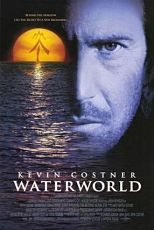 vehicles had marks, either a bush or a rock they could return to for take two . What you do with boats? There are no marks in the ocean. Also on land I can position the actors or vehicles to place them in better light. We only had 100 degrees of horizon before seeing land, so that became very limiting. Front lit in the morning and back lit in the afternoon. Just the simple task of lining up several boats including camera boat became extremely challenging, with the light, the currents, and the winds constantly changing. On top of all that imagine the giant flotilla of boats required before rolling cameras. One for actors one for director, one for makeup and hair one for stunts one for sound and so on and so on…it was like the bloody Spanish Armada. It was tough but enjoyable, I knew we were over budget; constant discussion about escalating costs. Well the two Kevins didn’t allow pages to be cut so we shot the whole script I think it was 166 days, mostly on the big island of Hawaii, with a few final weeks in Los Angeles. Just before ‘Waterworld’ Mel Gibson’s company approached me to shoot ‘Braveheart’. However I felt an obligation to Kevin who had mentioned the watery film some months before. We did exchange photos with the ‘Braveheart’ crew…the poor buggers were knee deep in mud and cold rain while we cruised the turquoise waters under the hot Hawaiian sun. Mel’s movie went on to win five Oscars …poetic justice?
vehicles had marks, either a bush or a rock they could return to for take two . What you do with boats? There are no marks in the ocean. Also on land I can position the actors or vehicles to place them in better light. We only had 100 degrees of horizon before seeing land, so that became very limiting. Front lit in the morning and back lit in the afternoon. Just the simple task of lining up several boats including camera boat became extremely challenging, with the light, the currents, and the winds constantly changing. On top of all that imagine the giant flotilla of boats required before rolling cameras. One for actors one for director, one for makeup and hair one for stunts one for sound and so on and so on…it was like the bloody Spanish Armada. It was tough but enjoyable, I knew we were over budget; constant discussion about escalating costs. Well the two Kevins didn’t allow pages to be cut so we shot the whole script I think it was 166 days, mostly on the big island of Hawaii, with a few final weeks in Los Angeles. Just before ‘Waterworld’ Mel Gibson’s company approached me to shoot ‘Braveheart’. However I felt an obligation to Kevin who had mentioned the watery film some months before. We did exchange photos with the ‘Braveheart’ crew…the poor buggers were knee deep in mud and cold rain while we cruised the turquoise waters under the hot Hawaiian sun. Mel’s movie went on to win five Oscars …poetic justice?
J: Is there any truth to the internet rumor that Kevin Reynolds left the production or was replaced by Kevin Costner as director of ‘WaterWorld’?
DS: Kevin Reynolds directed all the way through, there was no change. He was there on the first day and he was there on the last day, so was I. There is absolutely no truth to that. I don’t know where these ridiculous rumors come from. Reynolds was great.
J: You directed two films (Firestorm, The Patriot) in the late 1990’s. What made you decide to take the leap?
DS:Because I had worked with many other first-time directors, people would tell me, ‘you should direct.’ Some people would say ‘Dean Semler directed those movies’ and that’s absolute bullshit and I get cranky when I hear it. I do what I do and that is giving the director what he or she wants. I thought maybe I could take a crack at it one day, as Simon Wincer asked me to direct second unit on ‘Lonesome Dove’ a few years before and I really enjoyed it. But that was second unit; all the major work and headaches had been taking care of by the main unit. The first two actors I worked with as a director on ‘Lonesome Dove’ were Tommy Lee Jones and Robert Duvall and it scared the hell out of me, but they were very good and very understanding. Shortly after ‘Waterworld’ I was approached by Peter Rice at Fox to meet with Howie Long to see if he would approve of me directing ‘Firestorm’. Howie and I met at Peppones, an Italian restaurant in Brentwood. We discussed ‘Firestorm’, Mad Max, and Aussie rules footy. A few days later Peter Rice offered me the movie to direct.  I was a babe in the woods, and knew it. I loved the preparation, planning and the storyboards. I had a great crew consisting of a couple of fellow Aussies but it wasn’t what I do best. I like shooting. I really enjoy it. I was hellishly glad when it was all over. Before ‘Firestorm’ was released I had gone ‘Hollywood’ gotten a manager, and a bunch of agents in a big agency all great guys who advised me to take an immediate opportunity and direct a Steven Seagal movie which was already in pre production, they were replacing the director. I read the script which needed a lot of work, the cast was already set, locations had been found in Ennis, Montana, and with six weeks before shooting I thought I could bring it together. The shooting period in spectacular Montana was enjoyable enough, but I knew somehow that we didn’t have a great movie. Shortly after finishing the film, Philip Noyce asked me to shoot ‘Bone Collector’ it felt really comfortable to strap on the meters again.
I was a babe in the woods, and knew it. I loved the preparation, planning and the storyboards. I had a great crew consisting of a couple of fellow Aussies but it wasn’t what I do best. I like shooting. I really enjoy it. I was hellishly glad when it was all over. Before ‘Firestorm’ was released I had gone ‘Hollywood’ gotten a manager, and a bunch of agents in a big agency all great guys who advised me to take an immediate opportunity and direct a Steven Seagal movie which was already in pre production, they were replacing the director. I read the script which needed a lot of work, the cast was already set, locations had been found in Ennis, Montana, and with six weeks before shooting I thought I could bring it together. The shooting period in spectacular Montana was enjoyable enough, but I knew somehow that we didn’t have a great movie. Shortly after finishing the film, Philip Noyce asked me to shoot ‘Bone Collector’ it felt really comfortable to strap on the meters again.
J: What is something you look for in a director or project that you might be collaborating on?
DS: The script first of all, if it’s something I like. I’ve been lucky enough to have some choices most of the time. If I like the script, that’s a good starting point. I’ve never met a director that I didn’t want to work with. I don’t think I’ve ever worked for a director that’s saddled with a bad reputation; I’ve never had a problem. You have to remember it’s not me that picks them it’s them that picks me. A cinematographer doesn’t choose his director. Occasionally you’ll hear horror stories about some people. I’ve heard horror stories about some of the people I’ve worked with but I’ve never had a problem on set.
J: Many people felt that your work on ‘Secretariat’ was OSCAR worthy. How were you able to capture those breathtaking images and what do you feel about this year’s batch of nominees?
DS: First off, Thank you for your comments regarding ‘Secretariat’. I was very pleased with the overall look of the film. Our two leading jockeys had little dialogue, but a lot of riding to do, so the director, Randall Wallace cast real jockeys, which meant I could get cameras in very close and not worry about having to hide a rider who was a double for an actor. Randy wanted to know what it felt like to be right in the race with the horses so I elected to use a small consumer Olympus still 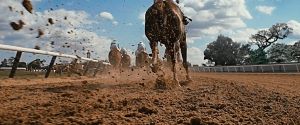 camera that recorded several minutes of HD video. It was attached to a 12 foot painter’s pole and operated by Kris Krosscove who was strapped to a smallish insert vehicle driven by Freddie Hice a stunt driver. The little camera would scream along inches above the ground only a few feet behind or in front of the racing thoroughbreds. I was able to get within inches of the horses’ eyes, nostrils, jockey’s hands, faces and feet. It was incredibly exciting material. Best of all, the horses weren’t intimidated by giant film cameras racing next to them.
camera that recorded several minutes of HD video. It was attached to a 12 foot painter’s pole and operated by Kris Krosscove who was strapped to a smallish insert vehicle driven by Freddie Hice a stunt driver. The little camera would scream along inches above the ground only a few feet behind or in front of the racing thoroughbreds. I was able to get within inches of the horses’ eyes, nostrils, jockey’s hands, faces and feet. It was incredibly exciting material. Best of all, the horses weren’t intimidated by giant film cameras racing next to them.
Regarding the OSCARS, I think they are all great choices. I thought Danny Cohen did an extraordinarily beautiful job on ‘The King’s Speech’; it’s solid from beginning to end. I think all five are absolutely worthy of it; personally I would single out ‘The King Speech’, a beautiful classic film, gorgeously lit characters and a wonderful capture of the time period. It was my favorite film of the year I would see it over again and I don’t do that with movies normally.
J: Can you tell us about your experiences working on the Sylvester Stallone film ‘D-Tox’?
DS: We had a very talented director in Jim Gillespie. The location was Vancouver and several weeks under pretty grueling conditions in the mountains near Whistler B.C. 15 feet of snow, giant wind machines creating blizzard conditions, transport on snow cats and all shot at night. It was tough going for everyone. The Canadian crew was great and knew all the tricks necessary to keep the equipment running and make the shoot as painless as possible. It’s such a shame that with so much effort, suffering, blood, sweat and tears and of course money that went into a production with a good director and a major star that the returns were so disappointing. This fickle business we’re all in.
J: Where do you stand in the debate of HD vs. film?
DS: I’ve shot 50 films on Panavision equipment; 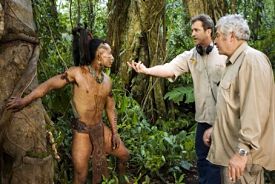 the last six or seven using the Panavision Genesis camera. I love it. Mel Gibson asked me if I knew anything about digital cinematography before ‘Apocalypto’ and I admitted to doing a few initial tests on the GENESIS but nothing serious, just played around a little bit. We went to Panavision and screened material that had been shot by Allen Daviau on the GENESIS alongside material shot on film. Side-by-side it was near impossible to tell the difference. Mel was concerned that the digital camera would not survive without holdups, but Panavision guaranteed us that it had been thoroughly tested in laboratory conditions and we would have no problems if we just treated it like any film camera under such conditions. Well it survived with no hold ups and while we were shooting in 110° heat and 90% humidity another GENESIS shoot was running smoothly at minus 30 degrees in Manitoba. Mel’s picture was pushed several months, but in the meantime, I had gotten a call from Adam Sandler’s producer who I had worked with on ‘The Longest Yard’. He asked me to photograph Adam’s next film ‘Click’. They all agreed for me to use the GENESIS. It was a Sony picture and they had made the tape deck for the GENESIS in conjunction with Panavision. So to say the least, they were happy for me to use their product. We were also shooting in L.A. It was the first picture shot in Hollywood on the GENESIS. I had Panavision close by and I also had EFILM film the post-production digital house who also provided an integral part of the system I was using in creating the final image. ‘Click’ was a very safe picture to photograph. There was nothing too extreme in lighting or special effects so it became a great ‘getting to know you exercise’ for all of us director, producers, camera crew, and editorial, all taking a step into the new digital world.
the last six or seven using the Panavision Genesis camera. I love it. Mel Gibson asked me if I knew anything about digital cinematography before ‘Apocalypto’ and I admitted to doing a few initial tests on the GENESIS but nothing serious, just played around a little bit. We went to Panavision and screened material that had been shot by Allen Daviau on the GENESIS alongside material shot on film. Side-by-side it was near impossible to tell the difference. Mel was concerned that the digital camera would not survive without holdups, but Panavision guaranteed us that it had been thoroughly tested in laboratory conditions and we would have no problems if we just treated it like any film camera under such conditions. Well it survived with no hold ups and while we were shooting in 110° heat and 90% humidity another GENESIS shoot was running smoothly at minus 30 degrees in Manitoba. Mel’s picture was pushed several months, but in the meantime, I had gotten a call from Adam Sandler’s producer who I had worked with on ‘The Longest Yard’. He asked me to photograph Adam’s next film ‘Click’. They all agreed for me to use the GENESIS. It was a Sony picture and they had made the tape deck for the GENESIS in conjunction with Panavision. So to say the least, they were happy for me to use their product. We were also shooting in L.A. It was the first picture shot in Hollywood on the GENESIS. I had Panavision close by and I also had EFILM film the post-production digital house who also provided an integral part of the system I was using in creating the final image. ‘Click’ was a very safe picture to photograph. There was nothing too extreme in lighting or special effects so it became a great ‘getting to know you exercise’ for all of us director, producers, camera crew, and editorial, all taking a step into the new digital world.
Next up was Mexico and ‘Apocalypto’ where I was able to put the new GENESIS cameras into orbit. I was able to film (I’ll always use that word) night sequences by firelight only,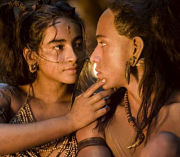 allowing tremendous freedom for the director and actors. I used the shutter to exaggerate the strobing affect and create the illusion of more speed in the chase sequences. I found that under the canopy above the dark jungle I could use the shutter and gain as the light faded, allowing me a much longer shooting time each day. My Aussie colleague Don McAlpine had photographed ‘Medicine Man’ in the same jungle a few years before; in fact there were still bits of gaffer tape stuck on trees here and there. I rang Don and bragged that I was able to shoot another couple of hours each day because of the genesis operating in such low light levels, and what did he say “mate,when it got too dark we all went back to the pub!”
allowing tremendous freedom for the director and actors. I used the shutter to exaggerate the strobing affect and create the illusion of more speed in the chase sequences. I found that under the canopy above the dark jungle I could use the shutter and gain as the light faded, allowing me a much longer shooting time each day. My Aussie colleague Don McAlpine had photographed ‘Medicine Man’ in the same jungle a few years before; in fact there were still bits of gaffer tape stuck on trees here and there. I rang Don and bragged that I was able to shoot another couple of hours each day because of the genesis operating in such low light levels, and what did he say “mate,when it got too dark we all went back to the pub!”
Having said all that about the GENESIS camera, I have just recently enjoyed shooting two movies on film ‘Appaloosa’ with Ed Harris directing and starring and ‘An Untitled Love Story’ for Angelina Jolie in Budapest. Ed wanted and old fashioned western and that would definitely be film, and for budget reasons we chose to shoot Angelina’s on film in Hungary, not that there is a huge cost difference, in fact I know on the other GENESIS films the savings in film costs, developing, scanning etc were pretty sizable. Hey I love both film and digital, and now of course the DI allows us almost unlimited creative control in post.
J: And how do you feel about the emergence of 3D?
DS: I’m not a huge fan although, I loved ‘Avatar’, it was sensational, I found it a total experience, an event, rather than just a movie. I’ve done some tests and will probably be shooting 3D myself before too long. I was lucky enough to partake in the 3D course at Sony Studios. I’m more of an organic filmmaker rather than being too terribly over-technical. On day two of the course when the 3D teachers started talking trigonometry I thought, “oh man how long since I’ve heard that word …school days?” however it was truly fascinating and a great course.
3D seems to be the flavour of the month at the moment proving to possibly earn more money than 2D films. It will be interesting to see how long it lasts… 3D cameras are becoming smaller and more manageable, and 3D conversion will become quicker and therefore cheaper…who knows. I read a funny story in Grace Kelly’s autobiography. She recounted when they shot ‘Dial M for Murder’. Warner Bros. wanted it done in 3D because another film had come out in that format and was doing well at the box-office. Hitchcock did not want to shoot 3D, he wanted to shoot ‘flattie ‘as he called 2D but was forced to by the studio. Grace Kelly explained they brought the camera into the room and it was like a room within a room, bigger than a phone booth. Because it took so long to set up the lights and get the camera ready Hitchcock was left with a lot of downtime between set ups every day, more so than on a normal film. However he used that spare time to develop ‘Rear Window’ with Grace Kelly.
J: Do you prefer shooting on Location or in a controlled Studio soundstage?
DS: People seem to think that filming in scorching deserts, or icy slopes, or steamy tropical jungles with heat, flies, spiders, snakes, dysentery, dust, snow, etc. etc. Would be most difficult…but wait… there’s a pay off. I have found that the more uninviting the location is to city people, the less visits to set and the less interference, good or bad?
J: What films or artists inspire you and your work?
DS: The first film that ever really impressed me was David Lean’s ‘Great Expectations’ shot in black-and-white. I had no idea when I saw that film, forty years later he would ask me to photograph his movie ‘Nostromo’, which didn’t happen because he passed away during pre-production. I loved ‘The Third Man’. Robert Kraft‘s glorious looking black and white. I also love Conrad Hall’s films from ‘Butch Cassidy’ all the way through to ‘Road to Perdition’.
I was never influenced so much by any individual painters, artists, photographers or DP’S. I’m inspired by every day images such as landscapes; looking at the sky; or the light on a giant city like New York. Even the early sun or twilight in a little country town. Or the way light rests on faces. Sometimes you see the most magnificent sights. I just try to remember as many of them as I can.
J: Have you ever walked on-set and thought “what have I gotten myself into”?
DS: Most recently, it was on Angelina Jolie’s film. There were 40 scenes in her script that are set in one room, ranging from pre dawn, to sunrise, to day, to dusk, to night and also through any of the four seasons. It was a white room on the first floor of a building in Budapest. “I was wondering, how the hell am I going to pull this off” it was truly a great challenge I enjoyed every day and I’m really happy with the results. I shot ‘Date Night’ with Steve Carrell and Tina Fey. New York in July doesn’t get dark until after 9.00pm, and daylight creeps in before 5.00am in the morning, so that leaves about seven to eight hours of shooting. A normal day shooting is 12 hours. So I made a suggestion to the producer. “We can’t afford to break for lunch. we have to work through! we’ve still got the same number of pages to shoot, but now in almost half the time” he said that if we worked through each meal break it would cost the production hundreds of thousands of dollars in meal penalties. bugger! So we had to push on, and once again managed to get through what seemed an impossibility and stayed on schedule. I’m very proud of moments like that.
J: What can we expect from Dean Semler in the future?
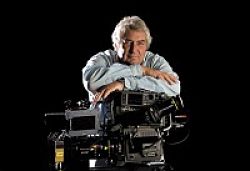 DS: I love doing what I’m doing. I’ve kicked into a new gear with digital image capture and I’m really enjoying this process. I’ve been asked to photograph the Tupac Shakur film being done by Antoine Fuqua. I’m in the running for that and I’ve read the scripts. It’s fantastic, it’s raw, it’s dirty and it’s dangerous. Hopefully that comes together in the next month or two. I’ve had a very quiet time recently, only doing one film this year, and that’s very rare for me. I think it had a lot to do with ‘Mad Max’ being delayed for another year. I know Randy Wallace has a script, ‘Love and Honor’, that he has wanted to do for a long time and we talked about it. Angelina Jolie has written another script that she wants me to photograph, but nothing definite yet. Hey…life’s never dull!
DS: I love doing what I’m doing. I’ve kicked into a new gear with digital image capture and I’m really enjoying this process. I’ve been asked to photograph the Tupac Shakur film being done by Antoine Fuqua. I’m in the running for that and I’ve read the scripts. It’s fantastic, it’s raw, it’s dirty and it’s dangerous. Hopefully that comes together in the next month or two. I’ve had a very quiet time recently, only doing one film this year, and that’s very rare for me. I think it had a lot to do with ‘Mad Max’ being delayed for another year. I know Randy Wallace has a script, ‘Love and Honor’, that he has wanted to do for a long time and we talked about it. Angelina Jolie has written another script that she wants me to photograph, but nothing definite yet. Hey…life’s never dull!

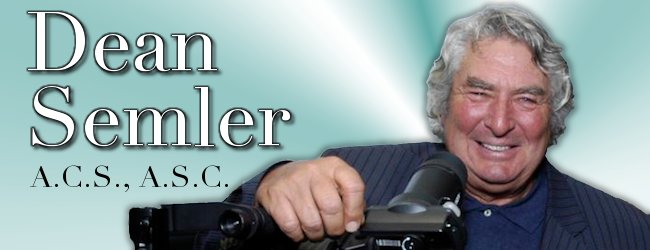
I loved this article of a true lighting master and true gentle-man. I’m a DP/Cinematographer today due to the inspiration of Dean’s work on Dances with Wolves and Apocalypto I met Dean while in film school and his work and gentle way is my goal every day !!!!. Thanks Dean for being such a wonderful inspiration to me !!!